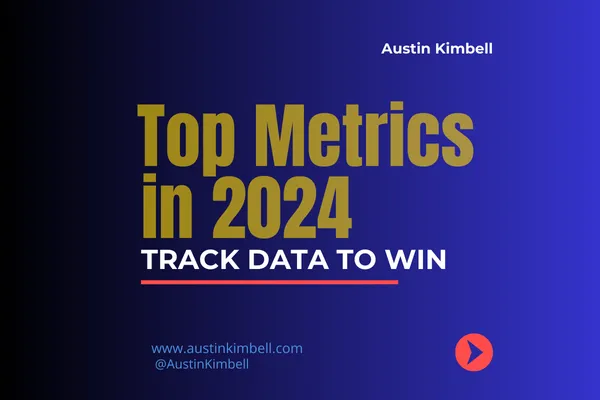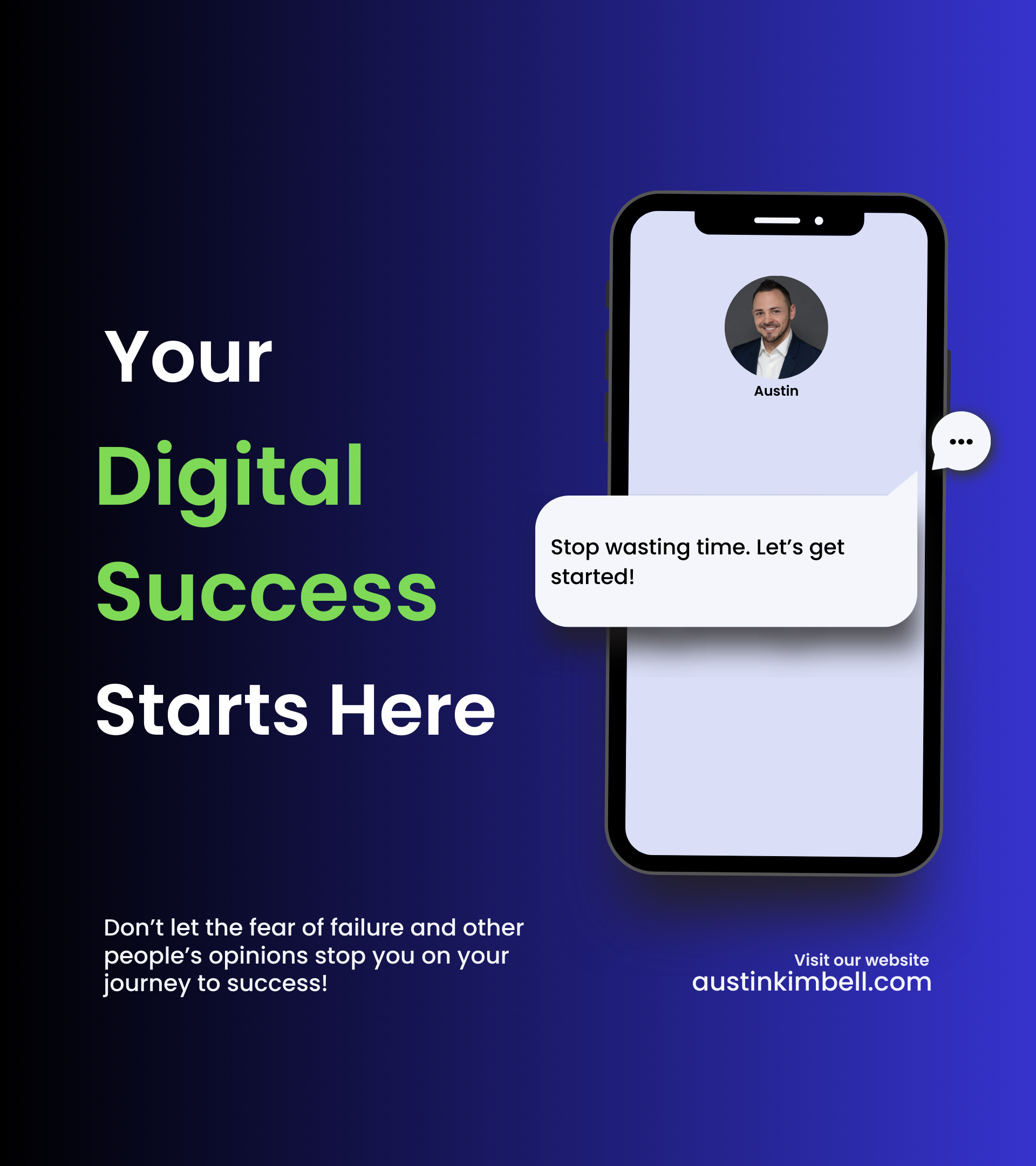
The Most Important Marketing Metrics to Track in 2024
“There is no better time than the present." - Jason Brock
Introduction:
In today’s data-driven business world, tracking the right marketing metrics is essential for growth. Companies that understand their KPIs can better navigate the customer journey, optimize campaigns, and achieve long-term success. As 2024 comes to a close, it’s vital to evaluate the metrics to prepare for 2025. Today, we will explore essential marketing metrics, why they matter, and how companies can implement them for lasting success.

With that said, I wanted to share details about myself. This will provide my background and why I choose to help others achieve their goals. 👊
1. Customer Acquisition Cost (CAC)
Why It Matters:
CAC is the total cost of acquiring a new customer, including marketing and sales expenses. Keeping CAC low while maintaining effectiveness is a critical strategy for scaling businesses. This metric reveals how efficiently you attract new customers.
Real Data from Successful Companies:
• HubSpot reports that the average CAC for SaaS companies is $1,150. By using inbound marketing tactics such as content creation and SEO, HubSpot reduced its CAC and attracted more leads organically.
• Dropbox scaled from 100,000 to 4 million users in 15 months with a viral referral program, reducing CAC to $0 by offering users incentives like extra storage for referrals.
How to Implement:
• Benchmark: Lower CAC by focusing on inbound marketing (e.g., content marketing, SEO, referral programs).
• Tools: Use C4 Payments to automate and streamline marketing activities, reducing overall CAC.
• Responsibility: Marketing and sales teams should collaborate to optimize targeting and lead qualification to lower acquisition costs.
2. Customer Lifetime Value (CLV)
Why It Matters:
CLV measures the total revenue a customer brings to a business over their entire relationship. Companies with a strong grasp on CLV can make more informed decisions about how much to spend on customer acquisition and retention.
Real Data from Successful Companies:
• Amazon’s average CLV for Prime customers is estimated at $3,000. With fast shipping, exclusive Prime services, and personalized recommendations, Amazon increases purchase frequency and keeps customers engaged.
• Starbucks has a CLV of $14,099, thanks to its loyalty program and mobile app integration, which make it easy for customers to order and earn rewards.
How to Implement:
• Benchmark: Aim for a CLV-to-CAC ratio of 3:1. If your CAC is $500, target a CLV of $1,500 or higher.
• Tools: Use LeadList.xyz to segment high-value customers and personalize offers that boost loyalty and retention.
• Responsibility: Marketing teams should focus on loyalty programs, customer engagement, and increasing purchase frequency to drive CLV.
3. Return on Ad Spend (ROAS)
Why It Matters:
ROAS measures the revenue generated for every dollar spent on advertising. This metric is crucial for understanding which ad campaigns are profitable and optimizing ad budgets for maximum returns.
Real Data from Successful Companies:
• Amazon achieves a 4:1 ROAS on its marketplace ads, ensuring that each dollar spent returns four times the revenue.
• Chewy, an online pet supplies retailer, grew rapidly by achieving a 3:1 ROAS with personalized retargeting ads on Facebook.
How to Implement:
• Benchmark: Aim for a ROAS of at least 4:1 in high-margin industries and 2:1 in lower-margin sectors.
• Tools: Use C4 Payments to manage ad spend across platforms, adjust bids, and target the right audiences for higher ROAS.
• Responsibility: Assign a dedicated team to monitor ad performance and optimize campaigns regularly.
4. Conversion Rate (CR)
Why It Matters:
Conversion rate tracks the percentage of visitors who take a desired action, such as completing a purchase or signing up for a newsletter. A higher CR means your marketing efforts resonate with your audience and drive engagement.
Real Data from Successful Companies:
• Shopify reports that top-performing stores see a conversion rate between 3.5% and 5%. These stores often optimize landing pages, CTAs, and user experience to drive sales.
• Unbounce improved its CR from 2.5% to 9% through A/B testing and landing page optimization.
How to Implement:
• Benchmark: Aim for a CR of 2% to 5%, depending on your industry.
• Tools: Use C4 Payments to automate lead nurturing workflows and LeadList.xyz to analyze customer behavior and optimize conversion opportunities.
• Responsibility: Marketing and UX teams should continuously run A/B tests and optimize landing pages to improve conversion rates.
5. Website Traffic & Engagement Metrics
Why It Matters:
Tracking metrics like bounce rate, session duration, and page views helps measure how well your content engages your audience. Higher engagement metrics often correlate with better conversion rates.
Real Data from Successful Companies:
• Netflix boasts an average session duration of 30 minutes by using algorithms to recommend relevant content and keep users engaged.
• BuzzFeed reduced its bounce rate to 37% by focusing on mobile optimization and creating engaging, click-worthy content.
How to Implement:
• Benchmark: Aim for a bounce rate below 40% and session durations over 2 minutes.
• Tools: Use C4 Payments to track website performance metrics in real time and make data-driven improvements.
• Responsibility: Content and SEO teams should regularly analyze user behavior and optimize content for engagement.
6. Social Media Engagement
Why It Matters:
Social media engagement (likes, shares, comments) reflects how well your content resonates with your audience. High engagement leads to greater brand visibility and customer loyalty.
Real Data from Successful Companies:
• Nike consistently achieves high engagement rates on Instagram, averaging 2.7% by posting emotionally charged, high-quality visuals.
• Glossier, a beauty brand, drives a 14% engagement rate by fostering a community of loyal followers through authentic user-generated content.
How to Implement:
• Benchmark: Strive for engagement rates of 1% to 3%, depending on the platform.
• Tools: Use C4 Payments for social media scheduling and engagement tracking, and LeadList.xyz to identify top influencers and customers to engage.
• Responsibility: Social media managers should focus on building communities and encouraging meaningful interactions with followers.
Business Metrics Checklist
1. Identify KPIs: Track CAC, CLV, ROAS, conversion rate, website traffic, and social media engagement.
2. Set Benchmarks: Use industry data to set realistic goals for each KPI.
3. Establish a Tracking System: Implement tools like C4 Payments and LeadList.xyz for real-time data and analysis.
4. Assign Responsibilities: Ensure specific teams are responsible for each KPI.
5. Review Metrics Regularly: Continuously adjust strategies based on performance data.
Conclusion
Tracking the right marketing metrics is crucial for business growth in 2024. From understanding how much you spend to acquire customers to measuring how effectively your ads perform, these KPIs will guide your strategy and ensure you make data-driven decisions. By using tools like C4 Payments for automation and LeadList.xyz for data insights, your business can leverage these metrics to optimize campaigns, improve customer retention, and scale effectively.
External Links:
• Learn how to track your KPIs with C4 Payments.
• Discover how to generate and analyze leads using LeadList.xyz.
• Schedule a consultation with AustinKimbell.com to get expert advice on improving your marketing metrics.
Ready to optimize your marketing strategy for 2024? Schedule a call with me at AustinKimbell.com to discuss how tracking the right KPIs can help your business scale efficiently. Together, we can develop a tailored plan that maximizes your growth and profitability.
